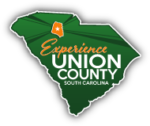Uncover History In Union County
Historic downtown Union is filled with specialty shops, friendly people, beautiful architecture and much more. You will be pleasantly surprised as you take a stroll down our beloved Main Street seeing all it has to offer. On your tour, you will embark upon historical buildings such as a Robert Mills designed old jail house, the Union County Museum, not mention a little shopping in between. As you plan your trip to Union County, be sure to visit the following landmarks that have been vital to our history and visit our museum to learn more about how our county came to be.
Reenactment at The Cross Keys Plantation
The Cross Keys Living History event takes place annually during the last weekend in April. The Union County Historical Society presents the reenactment of President Jefferson Davis’ stop at the Cross Keys house followed by a live military skirmish. It is free to the public.
163 Old Buncombe Rd, Union, SC 29379
Rose Hill Plantation
In the days following the election of President Abraham Lincoln, South Carolina Gov. William Henry Gist was characteristically blunt: “The only alternative left, in my judgment, is the secession of South Carolina from the Federal Union.”
Today, Rose Hill Plantation State Historic Site stands as a fine example of plantation homes of the South, and its purpose is to interpret the life and legacy of the man history has come to know as the “Secession Governor.”
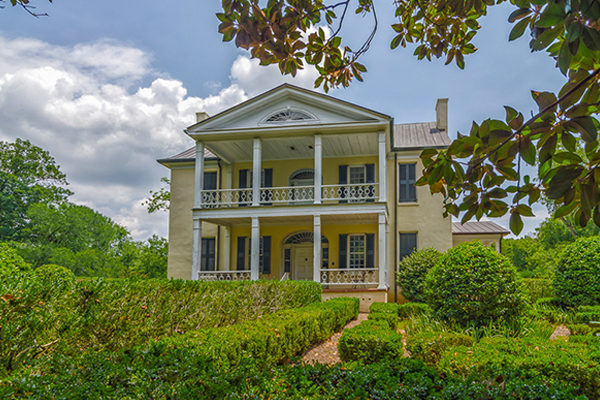
Today, visitors can tour one of the finest plantation homes of the South, walk the elegant grounds, admire its beautiful rose gardens and explore other original plantation buildings. The site also includes a short hiking trail down to the Tyger River.
2677 Sardis Rd, Union, SC 29379
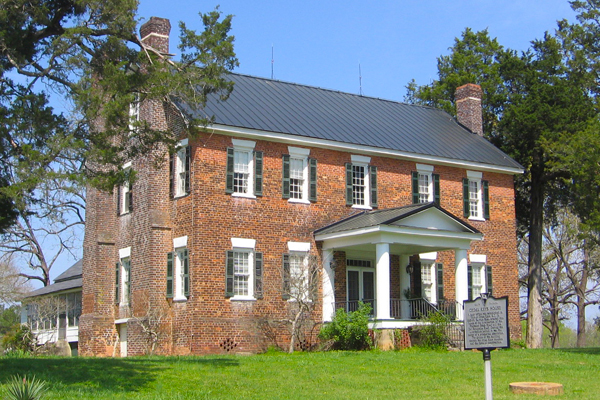
Cross Keys House
Built from 1812 to 1814 by Barrum (Barham) Bobo, the Cross Keys House is one of the oldest and most significant homes in Union County and the entire Upstate of South Carolina. The house was majestically located on a knoll at the intersection of two historic roads; the Old Buncombe Road (or Charleston Road) and Old Ninety-Six (also known as the Old Piedmont Stage Road). Two old milestones indicating the distances to Union and Columbia remain in front of the house. The house was a prosperous plantation that also provided a welcome stop for travelers.
Tradition supported by diaries hold that Jefferson Davis, some members of his cabinet and a military escort made their last stop in Union and had the noon meal at the Cross Keys House on their flight from Richmond, Virginia. There is a historic marker at the site and the house is listed as an historic site on the Jefferson Davis Trial.
163 Old Buncombe Rd, Union, SC 29379
Blackstock Plantation Site
The Battle of Blackstock’s Farm, an encounter of the American Revolutionary War, took place a few miles from Cross Anchor, on November 20, 1780.
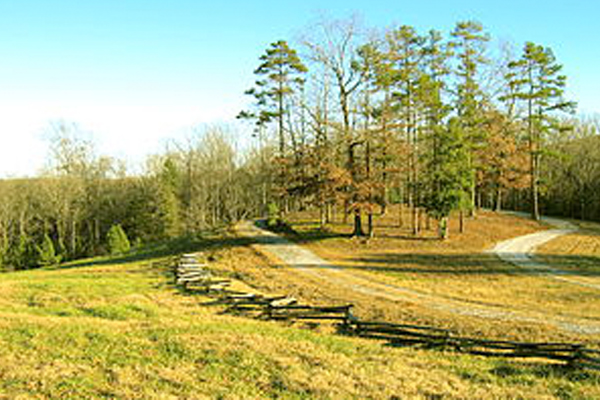
The Blackstock’s battlefield is located south of the Tiger River, immediately east of the Spartanburg County line, in a hilly, wooded region. The smaller hill on which Blackstock’s barn was located is at the end of a dirt road leading from the county road S-51. About 1500 feet from the Tiger River, this hill is designated with a marker. The large hill on which most of Sumter’s troops were stationed during the battle lies about 2,000 feet west of the historical marker. Two creeks run parallel to the road, one on either side, from the Tiger River.
No above-the-surface evidence remains of Blackstock’s barn or house.
598 Monument Rd, Enoree, SC 29335
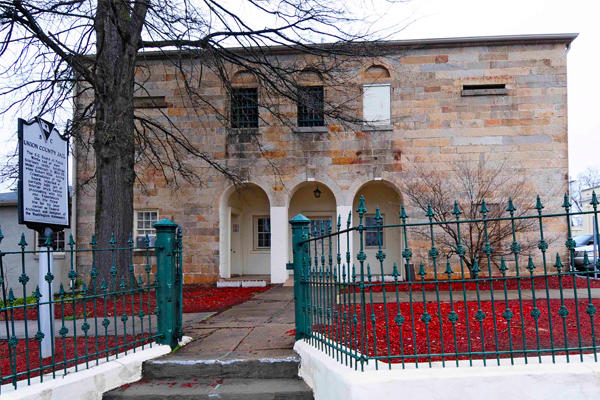
Original Union County Jail House
The Union County Jail, attributed to Robert Mills, is a two-storied, Palladian style structure of granite ashlar construction built in 1823. Mills’ work is characterized by the innovative technical aspects he employed in his designs for government structures. In prison design, he recommended that there be no basement dungeons due to their unhealthy nature and also because Mills felt that most breakouts occurred as a result of tunneling to the outside from a basement area. He also recommended that a caretaker’s apartment be placed to overlook the prison, an idea seen in the sheriff’s apartment at the Union Jail.
Mills was interested in providing decent living conditions for prisoners. Buildings were to be made as fireproof as possible to insure prisoner safety. In the Union Jail, cells were to be one-roomed and were arranged to provide for adequate ventilation.
The exterior of the jail has received two additions since 1900 and the interior has undergone extensive alteration. Listed in the National Register August 30, 1974.
220 West Main Street, Union, SC
Buffalo Mills
The Buffalo Mill Historic District is significant as an excellent collection of historic resources associated with the textile industry in South Carolina from the early-to-mid-twentieth century. The mill complex, including such resources as the main mill, mill office, power house, ice factory, mill warehouse, company store, and company bank/drug store, is a particularly intact collection of early-twentieth century mill and mill-associated buildings.
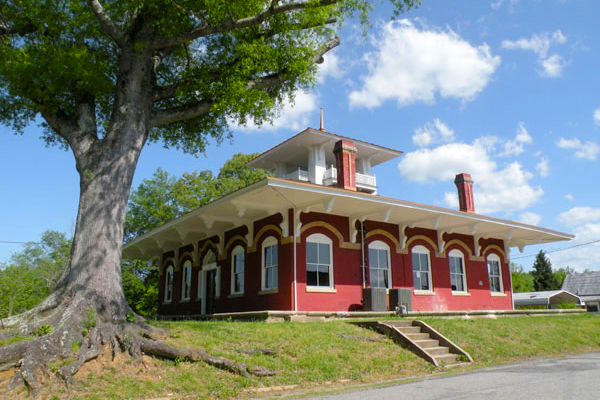
It is also significant for its association with W. B. Smith Whaley, a prominent engineer whose firm designed numerous textile mills in the state, including mills in Camden, Columbia, Lancaster, Orangeburg, and Union.
The mill village, including supervisors’ and operatives’ housing as well as auxiliary resources such as a school and a baseball field/park, is a particularly intact collection of other mill-associated resources. The mill complex and village, together with their setting, represent perhaps the best extant example of a South Carolina mill town. The district includes 192 contributing properties and 98 noncontributing properties. The mill building and most other Whaley-designed buildings at Buffalo are typical industrial designs with applied stylized Romanesque Revival detailing. This is achieved primarily through round-headed arches, polychromed brick, and decorative brick work including belt courses and corbelling. A major exception is the mill company office which has a less traditional exterior with its pyramidal roofing, battered pier belvedere, wide bracketed overhang and lavish American Renaissance interior. The mill housing varies from large, free-classic, Queen Anne supervisor’s houses, to shingle-style bungalows, to simple, one-story, lateral-gable, workers residences.
Listed in the National Register October 10, 1990.
106 Mill Rd, Buffalo, SC 29321
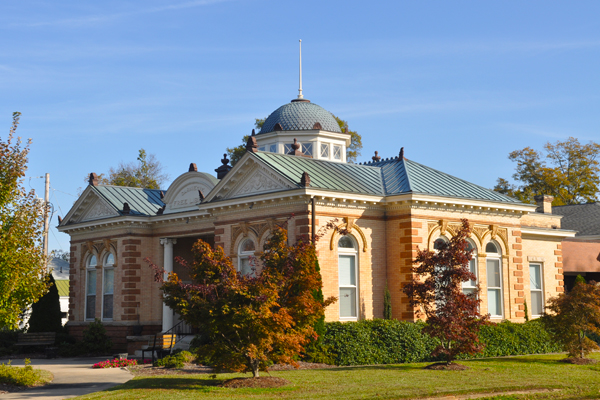
Carnegie Library
The Union Carnegie Library bears the distinction of having been the first Carnegie library built in South Carolina. Funded in 1903 according to what became known as the “Carnegie formula,” the millionaire required that communities receiving his grants contribute ten percent of his original donation amount every year thereafter, to provide for maintenance and operate the library as a public institution. Additionally, the community was asked to acquire a site for construction and to furnish all books and materials. Considered a brilliant business plan, this way Carnegie felt he was guaranteeing that a town’s investment was greater that his own, and that the libraries would be provided for in the future.
In 2009, the Union Carnegie Library was awarded the “Best Small Library in America.” by the Library Journal and the Bill and Melinda Gates Foundation.
Whether you are doing genealogical research or just would like to experience a gorgeous piece of history, it would be our honor to host you.
300 E South St, Union, SC 29379
Union County Courthouse
The neoclassical building in historic Union, the county seat of Union County, was completed in 1913.
This courthouse replaced the original, which was build in 1825 and designed by noted architect Robert Mills. The first courthouse was torn down in 1911, and construction on the current courthouse began that year. It still serves as the Union County Courthouse.
210 W Main St, Union, SC 29379
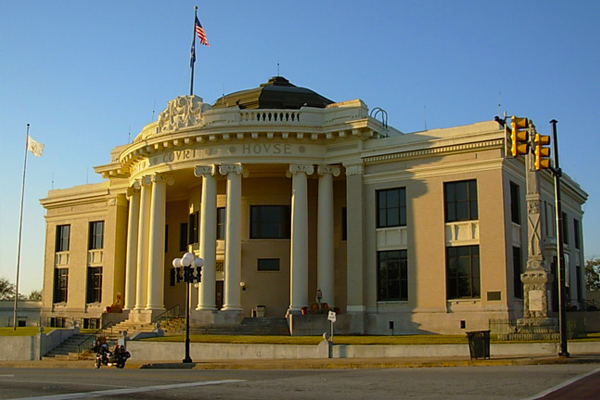
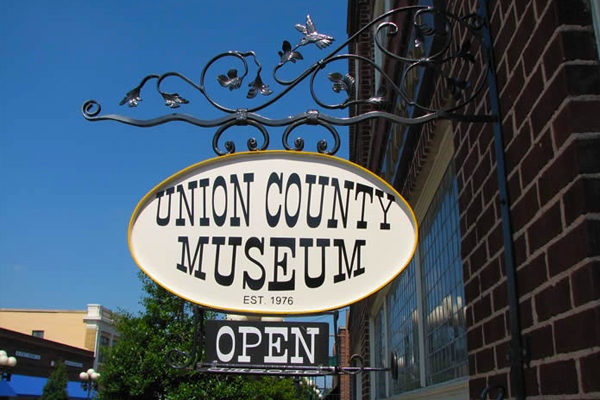
Union County Museum
Located on West Main St, the Union County Museum is open Thursday through Sunday and Tuesdays. The Museum, voted “Best Local Museum in the State of South Carolina,” is filled with historical materials ranging from local pottery, Civil War flags, photographs, paintings and rare books. The Museum is owned and operated by the Union County Historical Society and welcomes those who come to discover the history of Union County, South Carolina.
127 W Main St, Union, SC 29379
Union Mural
Union Mural by Blue Sky.
The mural, begun in 2007 and installed in 2008, depicts a train transporting textiles for Union Cotton Mills.
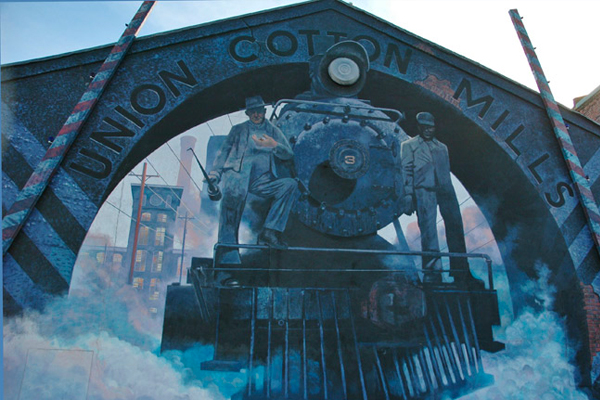
Completed in 1894, Union Cotton Mills was the first textile mill in Union County and the first in South Carolina designed by noted textile mill engineer William Burroughs Smith Whaley. His design firm, W.B. Smith Whaley and Company, is responsible for 15 new textile mills or major renovations and additions to existing mills in the state, including nearby Buffalo Mill, Newry Mill in Oconee County, and Granby Mill in Columbia.
185 Sharpe Ave, Union, SC 29379
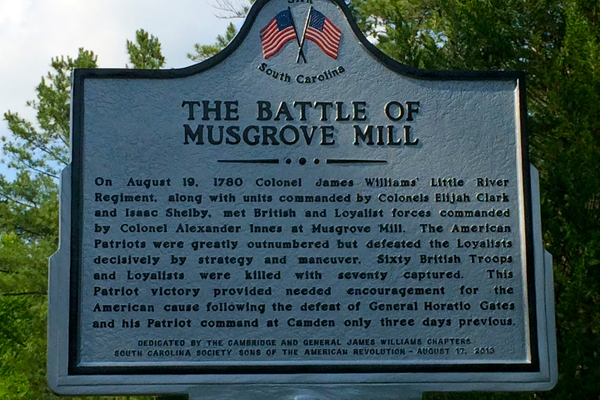
Musgrove Mill
Musgrove Mill’s peaceful setting in the Piedmont woods stands in sharp contrast to the bloody Battle of Musgrove Mill that took place there on Aug.19, 1780. The Revolutionary War historic sites at Musgrove Mill interpret and protect the location of the Battle of Musgrove Mill. The battle, in which the vastly outnumbered Patriot militia outlasted the Loyalists in a surprising victory, is detailed through interpretive signage in the visitor center and along two and a half miles of nature trails.
Natural features of the park include Horseshoe Falls and the Enoree River, along which much of the fighting took place. Special events and living history programs are held at the park throughout the year.
398 State Park Rd, Clinton, SC 29325
Union Depot
Used as a passenger depot, the Union Depot was built at the turn of the twentieth century in downtown Union. The depot is still in service for the Norfolk Southern Railway.
Depot St, Union, SC 29379
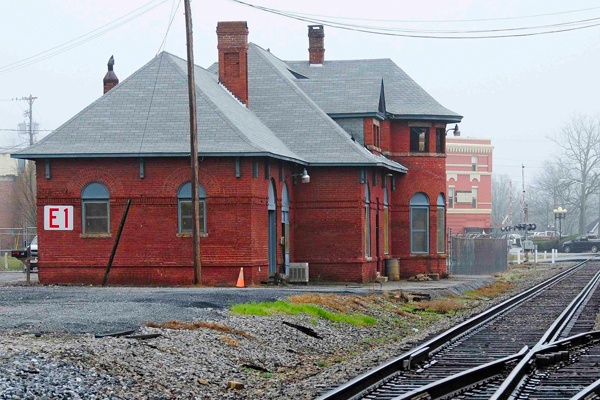
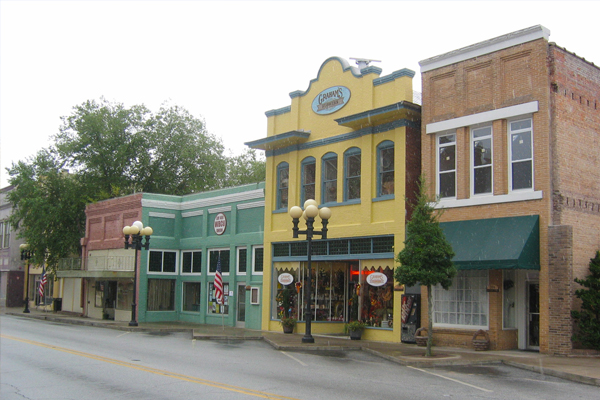
Downtown Union
Downtown Union has existed for over 225 years. A nice collection of architecturally diverse buildings and over 150 businesses are surrounded by magnificent public buildings, and a branch of the University of South Carolina.
The commercial, public, residential, industrial, and transportation-related buildings were built between about 1878 to about 1940, with the majority dating from about 1880 to about 1930. The district includes buildings representative of the Neo-Classical and Victorian styles. Notable buildings include the Union County Courthouse, Union Post Office/Federal Building, Flynn Building, Krass Building, People’s State Bank/Arthur State Bank, Union Depot, Union Cotton Oil Mill, and Union Hardware Co.
E Main St, Union, SC 29379
